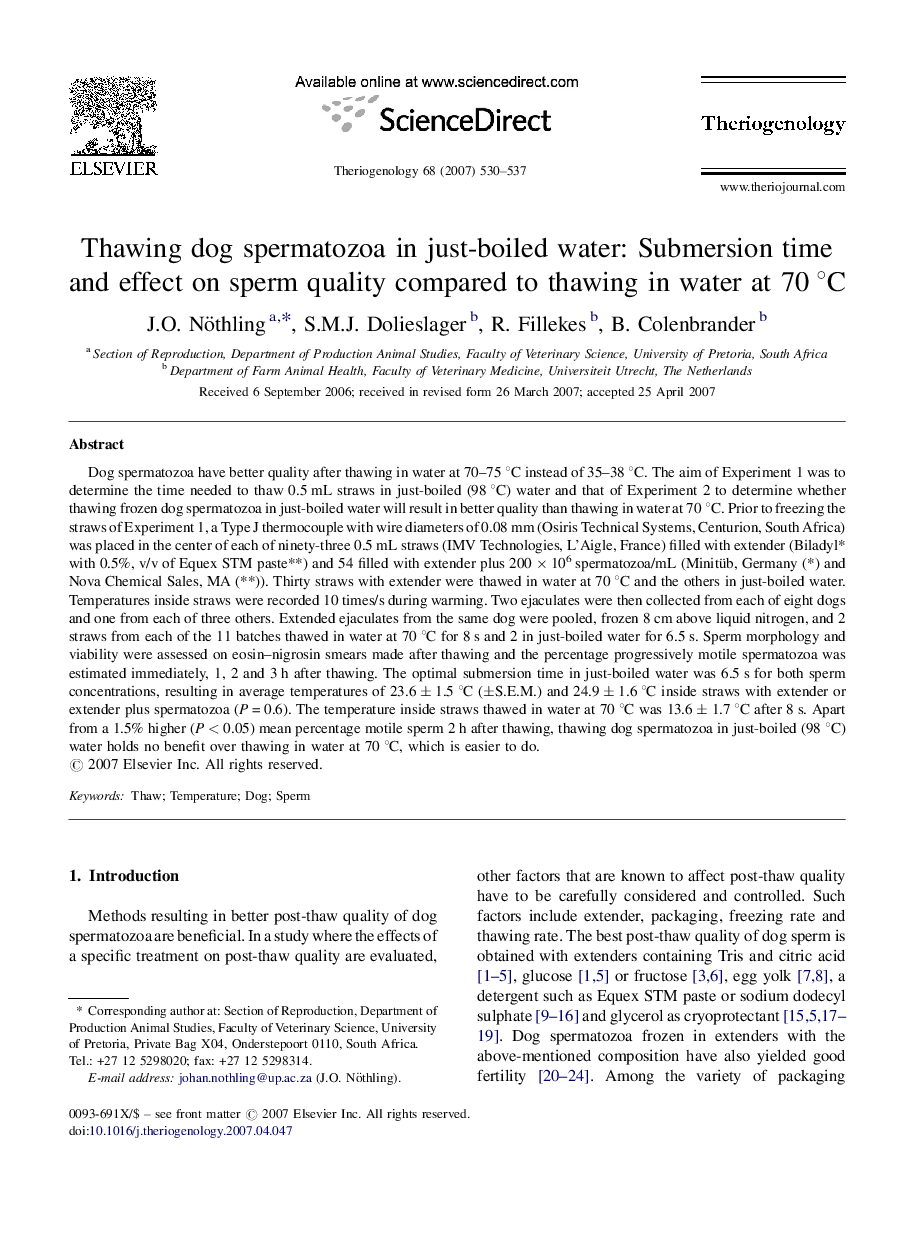| Article ID | Journal | Published Year | Pages | File Type |
|---|---|---|---|---|
| 2097230 | Theriogenology | 2007 | 8 Pages |
Dog spermatozoa have better quality after thawing in water at 70–75 °C instead of 35–38 °C. The aim of Experiment 1 was to determine the time needed to thaw 0.5 mL straws in just-boiled (98 °C) water and that of Experiment 2 to determine whether thawing frozen dog spermatozoa in just-boiled water will result in better quality than thawing in water at 70 °C. Prior to freezing the straws of Experiment 1, a Type J thermocouple with wire diameters of 0.08 mm (Osiris Technical Systems, Centurion, South Africa) was placed in the center of each of ninety-three 0.5 mL straws (IMV Technologies, L’Aigle, France) filled with extender (Biladyl* with 0.5%, v/v of Equex STM paste**) and 54 filled with extender plus 200 × 106 spermatozoa/mL (Minitüb, Germany (*) and Nova Chemical Sales, MA (**)). Thirty straws with extender were thawed in water at 70 °C and the others in just-boiled water. Temperatures inside straws were recorded 10 times/s during warming. Two ejaculates were then collected from each of eight dogs and one from each of three others. Extended ejaculates from the same dog were pooled, frozen 8 cm above liquid nitrogen, and 2 straws from each of the 11 batches thawed in water at 70 °C for 8 s and 2 in just-boiled water for 6.5 s. Sperm morphology and viability were assessed on eosin–nigrosin smears made after thawing and the percentage progressively motile spermatozoa was estimated immediately, 1, 2 and 3 h after thawing. The optimal submersion time in just-boiled water was 6.5 s for both sperm concentrations, resulting in average temperatures of 23.6 ± 1.5 °C (±S.E.M.) and 24.9 ± 1.6 °C inside straws with extender or extender plus spermatozoa (P = 0.6). The temperature inside straws thawed in water at 70 °C was 13.6 ± 1.7 °C after 8 s. Apart from a 1.5% higher (P < 0.05) mean percentage motile sperm 2 h after thawing, thawing dog spermatozoa in just-boiled (98 °C) water holds no benefit over thawing in water at 70 °C, which is easier to do.
